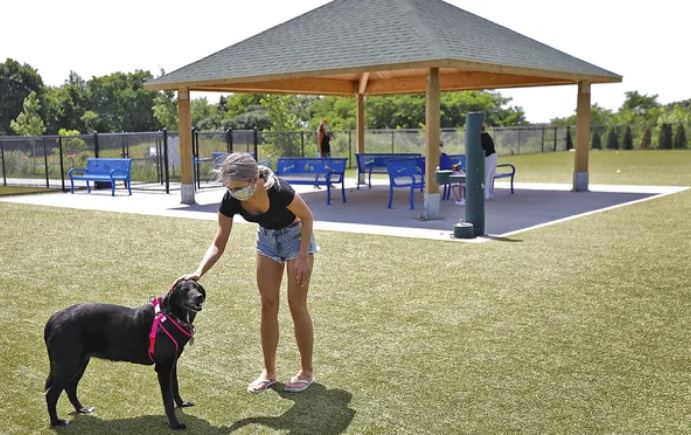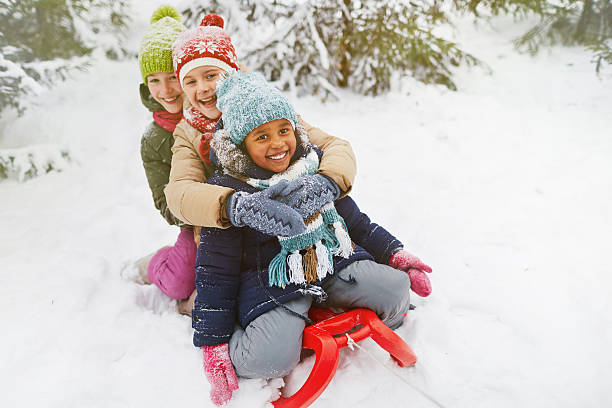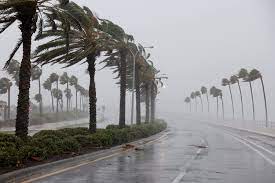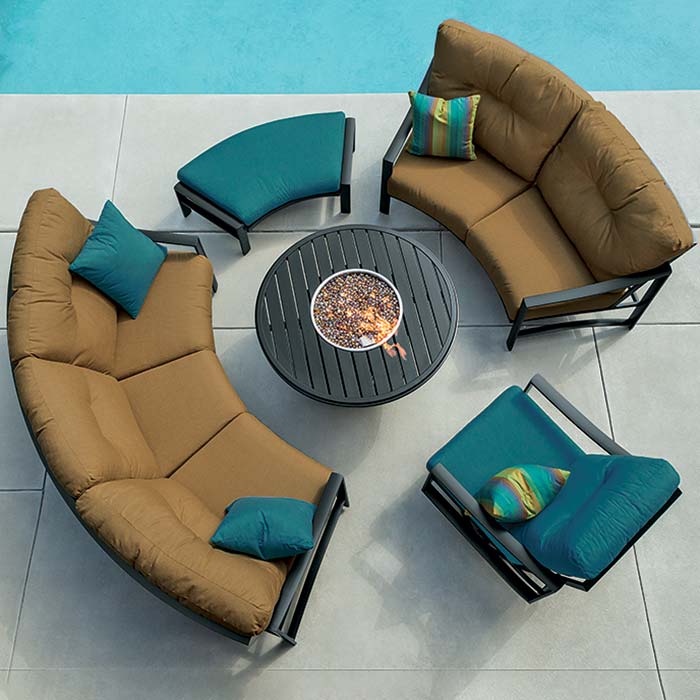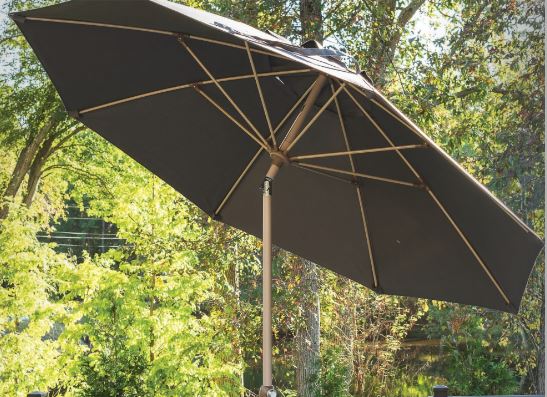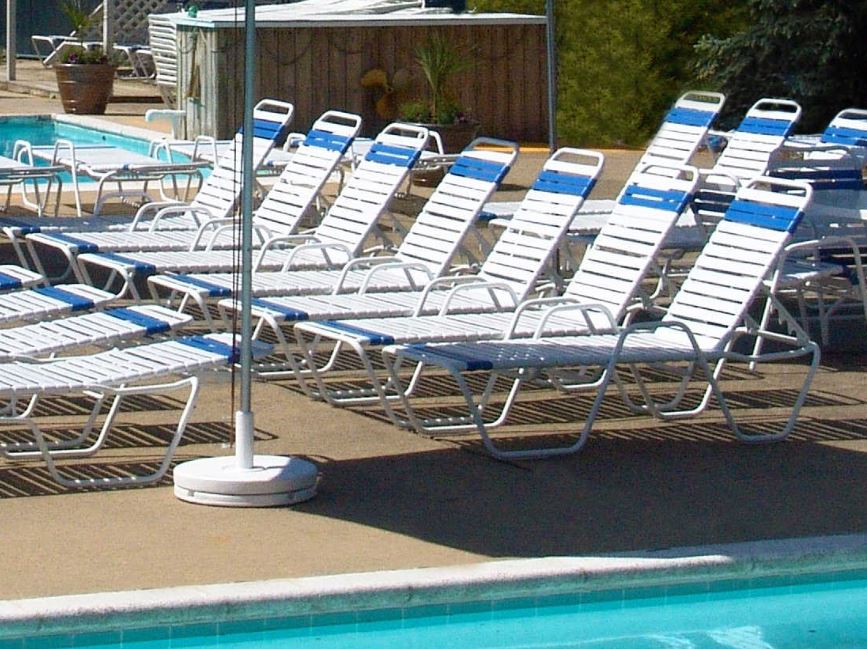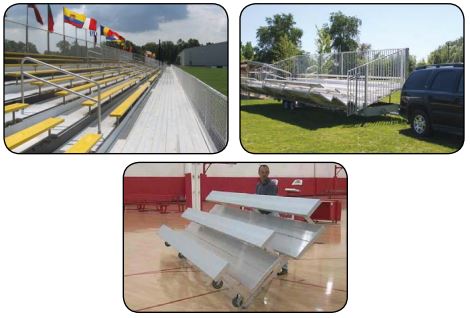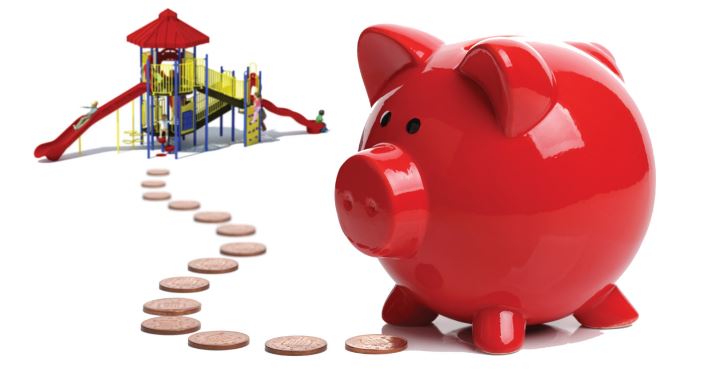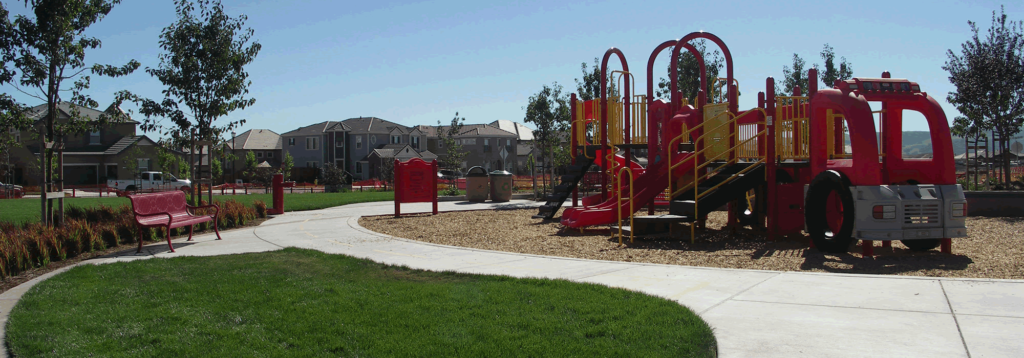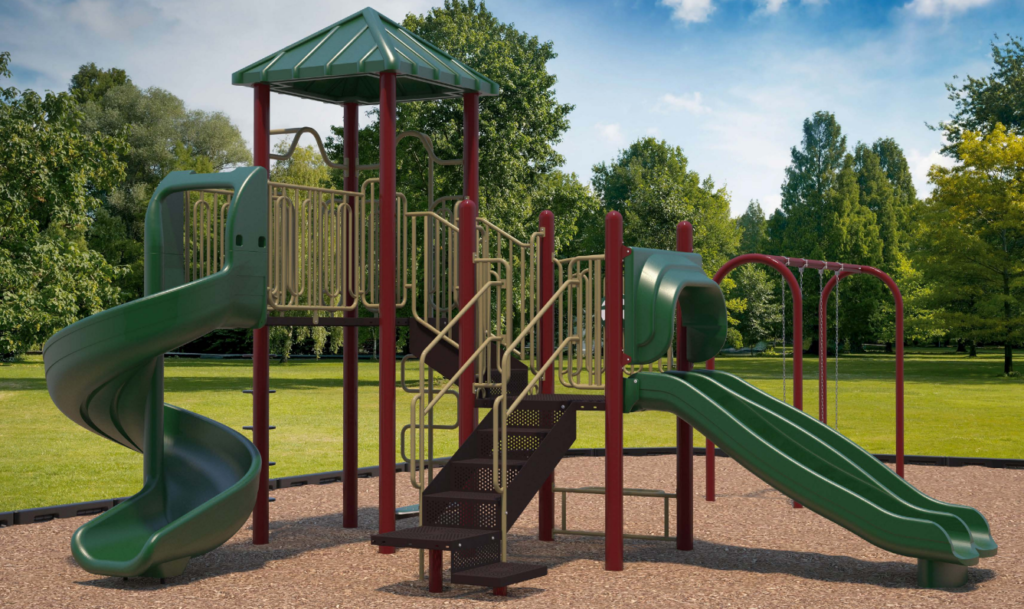Basic Safety Guidelines
Over 20,000 people are hurt annually in accidents involving bleachers! Many of these injuries involve children. A large percentage are a result of a person falling from, or through, bleachers to the ground.
Falls from bleachers typically occur when guardrails are missing from the back or sides of bleachers but can also ensue when there are openings between seating and footboards that are big enough to allow a person through. The Consumer Product Safety Commission (CPSC) has developed guidelines to prevent these falls.
Many bleachers in facilities today pose a fall hazard, especially to children, due to the fact that these bleachers may have been build and installed when building codes did not require guardrails and allowed openings that were big enough for a child to fit through. To prevent falls, it is recommended that guardrails and openings meet the following recommendations:
- A bleacher should have a guardrail along the back, and surrounding the open ends, where the drop is more than 30″ to the ground below.
- The guardrail should be at least 42″ high and, if using a vertical picket guardrail, all openings should be small enough that a 4″ sphere cannot fit through.
- If chain link fencing is used, it is recommended using chain link that has a 1.25″ (or less) mesh to discourage kids from climbing.
- Where visibility would not be significantly impaired, use solid materials to block openings.
Types of Bleachers
Bleachers are used by spectators to comfortably view sporting events, graduations, races, parades and many other activities. They are structures that provide tiered seating and come in a variety of configurations and sizes.
ParknPool offers numerous bleacher options that fall into three categories (pictured respectively): permanent/stationary, portable/towable, and temporary (generally known as Tip N’ Roll). Permanent bleachers are attached to the ground with anchors while portable bleachers are able to be used at multiple locations. Temporary bleachers are usually smaller units that are only used for specific events and can be stored while not in use. The guidelines in this guide, and the ones by the CPSC, apply to these three categories of bleachers.
Retrofitting Existing Bleachers
If retrofitting rather than replacing your existing set of bleachers is more feasible for your budget, the current condition and structure of your bleachers will determine the materials and methods needed to retrofit. It is imperative to ensure that the methods and materials used do not introduce the possibility of new hazards such as bleacher tip-over, bleacher collapse, guardrail collapse, and contact or tripping hazards.
Where practical, features such as aisles, handrails and non-slip surfacing should be incorporated into any retrofit project. Consult with a licensed professional or qualified bleacher firm to learn more about what is important in aiding people to move safely about on bleachers.
Rigid material, such as aluminum, should be used to close any openings between the seating and footboards. Chain link or fencing material can introduce potential trip hazards, allow debris to collect under the seats that is not easy to remove, and encourage children to play or hang on it.
ParknPool and the CPSC recommend that you consult with your local building officials to determine whether a permit is required to make any retrofit changes to your existing bleachers. It is also advisable to check local requirements for such things as aisles and guardrails, ADA, or other conditions. Building codes vary by state, year written and by the group that issues them – International Building Code (IBC), Uniform Building Code (UBC), Standard Building Code (SBC), National Fire Protection Association (NFPA), etc. – so be sure to check with your local building codes.
Guardrails, Handrails & Aisles
Having the appropriate components to aid in the access and egress on, of and around bleacher units is imperative for user safety. Guardrails missing from the backs of bleachers, or open sides can cause injury from falls. Gaps in the guardrail, between the footboard and seat, or at the bottom of the guardrail that are large enough for a person to pass through can also cause injury.
Guardrails should not encourage children to climb on or over them. The easiest way to do this is by choosing bleachers with vertical picket guardrails or make sure the chainlink is less than 1.25″ wide. All the bleachers ParknPool offers are available with vertical picket guardrails. In most cases the fourth row of a set of non-elevated bleachers is taller than 30″ which means that there is a riser plank (pictured below) to stop small children from falling through. This closes the gap between the seat and foot boards.
Aisles, handrails and non-skid surfacing are key factors in allowing people to safely move around on bleachers. Many older bleachers do not have these features but can be retrofitted to make existing bleachers safe.
Maintenance & Inspections
Whether you choose to retrofit your current bleachers or order replacement ones, they should be carefully inspected at least once a quarter to identify any damage to the structure or disrepair that could result in injury or death. Problems identified should be corrected immediately. Any inspections or maintenance should be completed by a trained individual, and any action taken should be documented. In addition to the quarterly inspections, the CSPC recommends that a licensed professional engineer or person qualified to provide bleacher products and services should inspect the bleachers at least once every two years. At that time, a written certification will be issued that the bleachers are fit for use.
It is crucial to follow the CPSC’s guidelines to ensure the highest safety. It is imperative that you deal with an individual who is knowledgeable and equipped to answer any questions, as well as provide bleacher seating that meets all of the CPSC’s guidelines.
No one’s safety is worth taking a risk by leaving outdated bleachers in place!
Call ParknPool at 877.777.3700 today and speak to one of our knowledgeable account managers who are waiting to answer all of your questions!
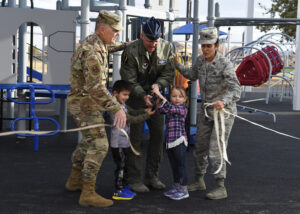 Every military community can benefit from a playground area. They encourage children to engage in active play, improve physical coordination and interact with their peers. In addition, commercial playgrounds on military bases can also serve as a wonderful tool for younger children to reacquaint themselves with their parents who are returning from a long deployment. They provide a setting that is filled with fun activities where a child can acclimate themselves with their parent’s return.
Every military community can benefit from a playground area. They encourage children to engage in active play, improve physical coordination and interact with their peers. In addition, commercial playgrounds on military bases can also serve as a wonderful tool for younger children to reacquaint themselves with their parents who are returning from a long deployment. They provide a setting that is filled with fun activities where a child can acclimate themselves with their parent’s return.
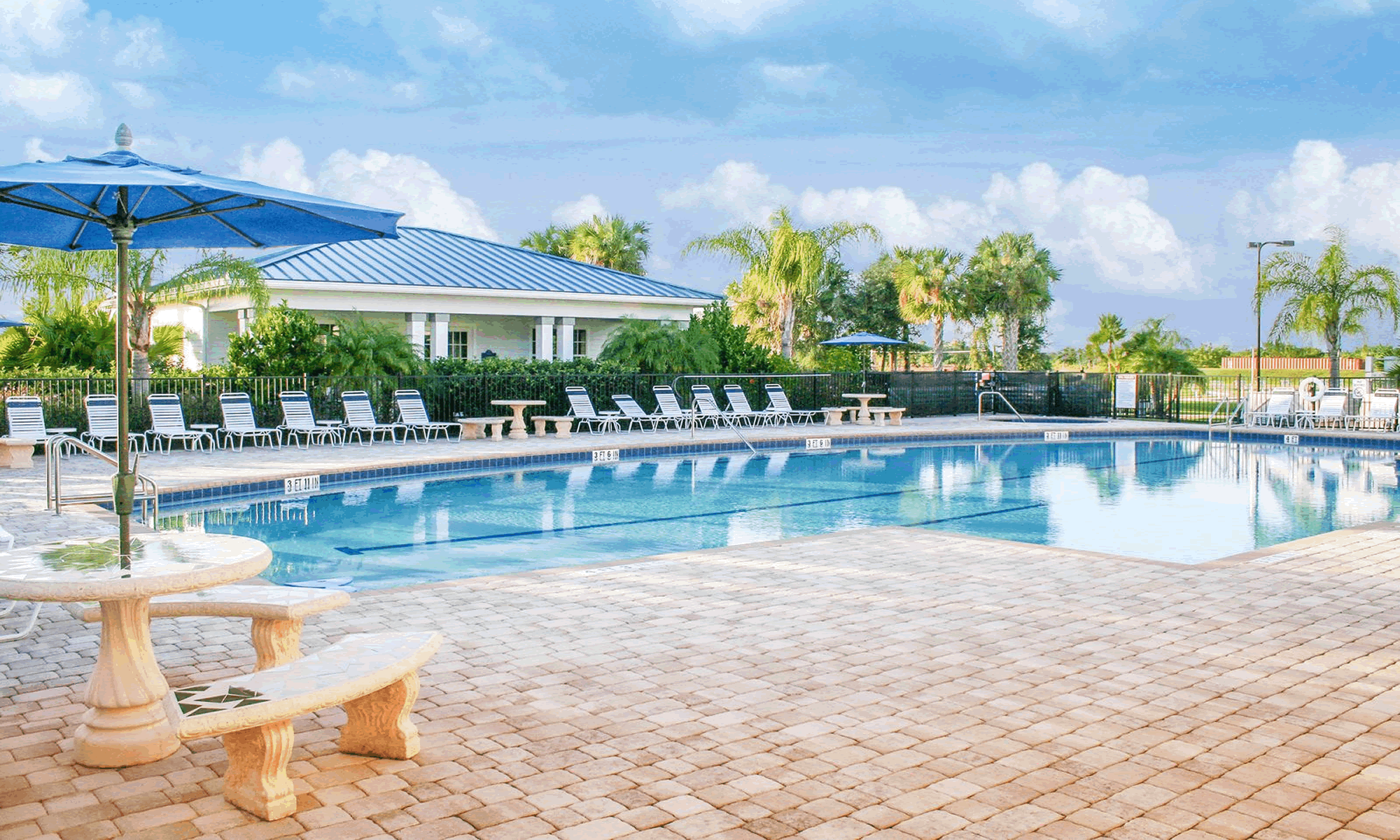

 Site amenities should be based on comfort and user friendliness, choosing one piece over another depends on the overall style and design of the space. For example, in some areas movable tables and chairs are more suitable than permanent mounted site amenities. Also, an attractive color can enliven a space and attract people to use it but comfort is an important factor in purchasing a
Site amenities should be based on comfort and user friendliness, choosing one piece over another depends on the overall style and design of the space. For example, in some areas movable tables and chairs are more suitable than permanent mounted site amenities. Also, an attractive color can enliven a space and attract people to use it but comfort is an important factor in purchasing a 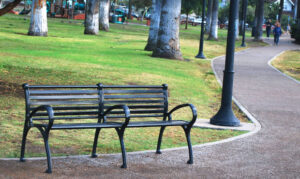 Observing how people use amenities will help in selecting the right kind for your particular area. For example, keep in mind that two-seat benches where there may be only one person sitting at each bench creates a waste of seating. There are also special considerations depending on the environment, such as:
Observing how people use amenities will help in selecting the right kind for your particular area. For example, keep in mind that two-seat benches where there may be only one person sitting at each bench creates a waste of seating. There are also special considerations depending on the environment, such as: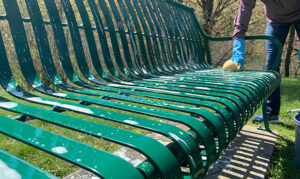 Maintenance is essential in all public areas. Choosing furniture and amenities that are easy to clean and store will help your maintenance crew. Products that are low maintenance can be a better deal than some of their more expensive counterparts, it all depends on how much time and resources you can devote to the upkeep.
Maintenance is essential in all public areas. Choosing furniture and amenities that are easy to clean and store will help your maintenance crew. Products that are low maintenance can be a better deal than some of their more expensive counterparts, it all depends on how much time and resources you can devote to the upkeep.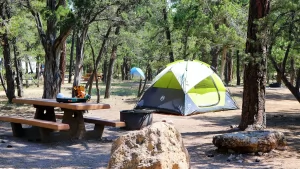 Picnic Tables: While many travelers and campers bring their own grill or stove, few actually carry a
Picnic Tables: While many travelers and campers bring their own grill or stove, few actually carry a 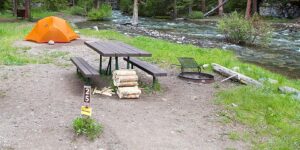 Grills and Fire Rings: Fire rings are essential at camp sites because they reduce fire hazards and make maintenance easier. Since, in most areas, evening use is not encouraged at picnic arears, fire rings are generally not necessary there.
Grills and Fire Rings: Fire rings are essential at camp sites because they reduce fire hazards and make maintenance easier. Since, in most areas, evening use is not encouraged at picnic arears, fire rings are generally not necessary there. 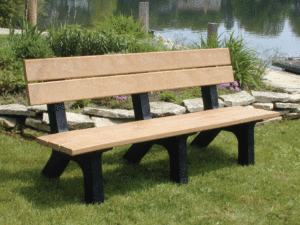 The Story: After reading the morning paper, Old Man Thomas always takes “Roscoe” for a walk. They’ve been doing this since Mr. Thomas retired almost 10 years ago. The fall is their favorite time of the year to walk, the old man finds the leaves beautiful and it’s a little bit easier for “Roscoe” to stand the weather. You see, “Roscoe” has developed arthritis in his hind quarters do to his old age. Cold weather causes it to flare up and the heat is just too much for an old dog to handle. Mr. Thomas’ favorite poet is Edgar Allen Poe and on their morning strolls he may quote a little from one of his favorite poems while “Roscoe” listens in closely: “In visions of the dark night I have dreamed of joy departed but a waking dream of life and light hath left me broken-hearted.”
The Story: After reading the morning paper, Old Man Thomas always takes “Roscoe” for a walk. They’ve been doing this since Mr. Thomas retired almost 10 years ago. The fall is their favorite time of the year to walk, the old man finds the leaves beautiful and it’s a little bit easier for “Roscoe” to stand the weather. You see, “Roscoe” has developed arthritis in his hind quarters do to his old age. Cold weather causes it to flare up and the heat is just too much for an old dog to handle. Mr. Thomas’ favorite poet is Edgar Allen Poe and on their morning strolls he may quote a little from one of his favorite poems while “Roscoe” listens in closely: “In visions of the dark night I have dreamed of joy departed but a waking dream of life and light hath left me broken-hearted.” The Story: Jerry and his daughter’s boyfriend, Kirk, have decided to spend a weekend together fishing on the lake. They’ve done it before and each trip is a memorable one but this particular weekend is going to be especially memorable. Kirk is about to pop the question to his girlfriend of 5 years and the purpose of this trip is to ask her father for his blessing.
The Story: Jerry and his daughter’s boyfriend, Kirk, have decided to spend a weekend together fishing on the lake. They’ve done it before and each trip is a memorable one but this particular weekend is going to be especially memorable. Kirk is about to pop the question to his girlfriend of 5 years and the purpose of this trip is to ask her father for his blessing.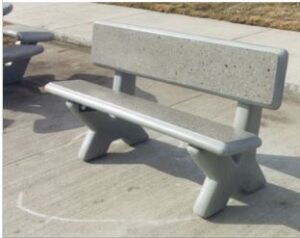 The Story: Since Kirsten was a year old she has watched “Snow White” 115 times, she just turned 3. She knows every word and can recite all 7 dwarfs with ease. She has wanted nothing more than to meet the princess that is plastered all over her bedroom walls. Her parents, who both work full-time jobs, had to save up the money to take little Kirsten to Disney World and they finally got the chance to make the trip. When Kirsten spotted Snow White with one of her dwarfs, she broke loose from her mother’s tight grip to be sure not to miss her chance. After this meeting, Kirsten was chosen to be princess for the day. She rode in the parade and waved at the other park visitors. This was the day she realized that no dream is too big.
The Story: Since Kirsten was a year old she has watched “Snow White” 115 times, she just turned 3. She knows every word and can recite all 7 dwarfs with ease. She has wanted nothing more than to meet the princess that is plastered all over her bedroom walls. Her parents, who both work full-time jobs, had to save up the money to take little Kirsten to Disney World and they finally got the chance to make the trip. When Kirsten spotted Snow White with one of her dwarfs, she broke loose from her mother’s tight grip to be sure not to miss her chance. After this meeting, Kirsten was chosen to be princess for the day. She rode in the parade and waved at the other park visitors. This was the day she realized that no dream is too big.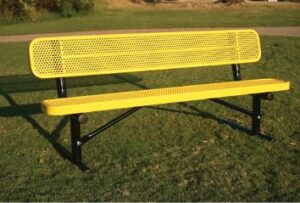 The Story: Sue has taken her daughter to this same playground for 4 years but could never get Carrie to slide down the slide. Carrie has always been afraid of what awaits at the bottom, even if her mother’s arms were always waiting to catch her. This is the first time little Carrie has gotten up the nerve to climb up the ladder and take the plunge to the bottom. She never knew it could be so fun! Now Sue can’t keep her off the slide, everyday when she is picked up from Kindergarten she HAS to stop by the playground to take a few turns sliding down the slide into her mother’s waiting arms.
The Story: Sue has taken her daughter to this same playground for 4 years but could never get Carrie to slide down the slide. Carrie has always been afraid of what awaits at the bottom, even if her mother’s arms were always waiting to catch her. This is the first time little Carrie has gotten up the nerve to climb up the ladder and take the plunge to the bottom. She never knew it could be so fun! Now Sue can’t keep her off the slide, everyday when she is picked up from Kindergarten she HAS to stop by the playground to take a few turns sliding down the slide into her mother’s waiting arms.